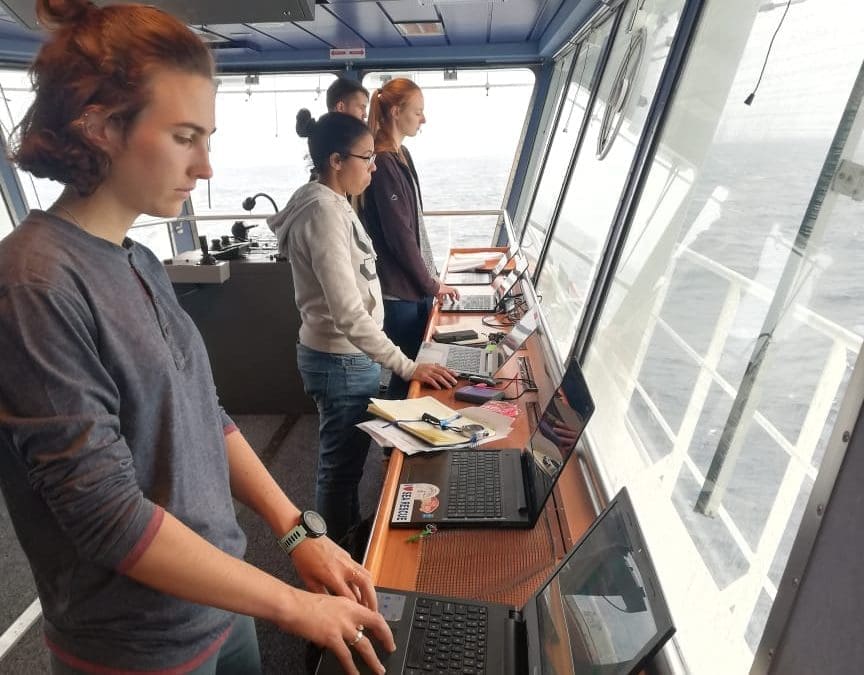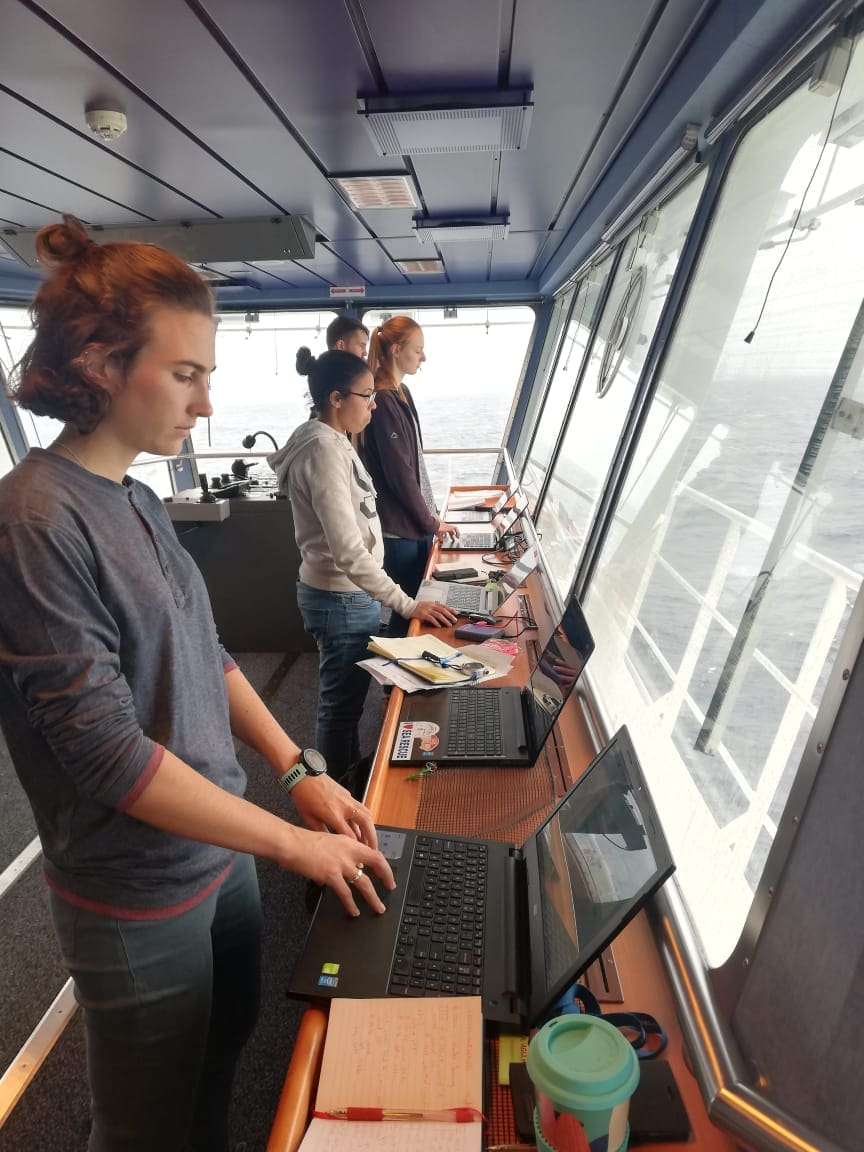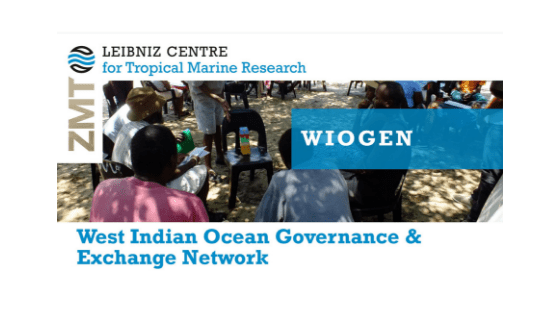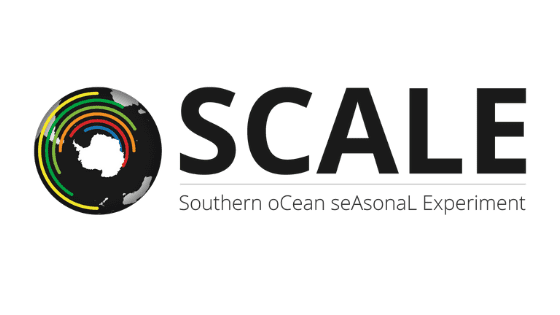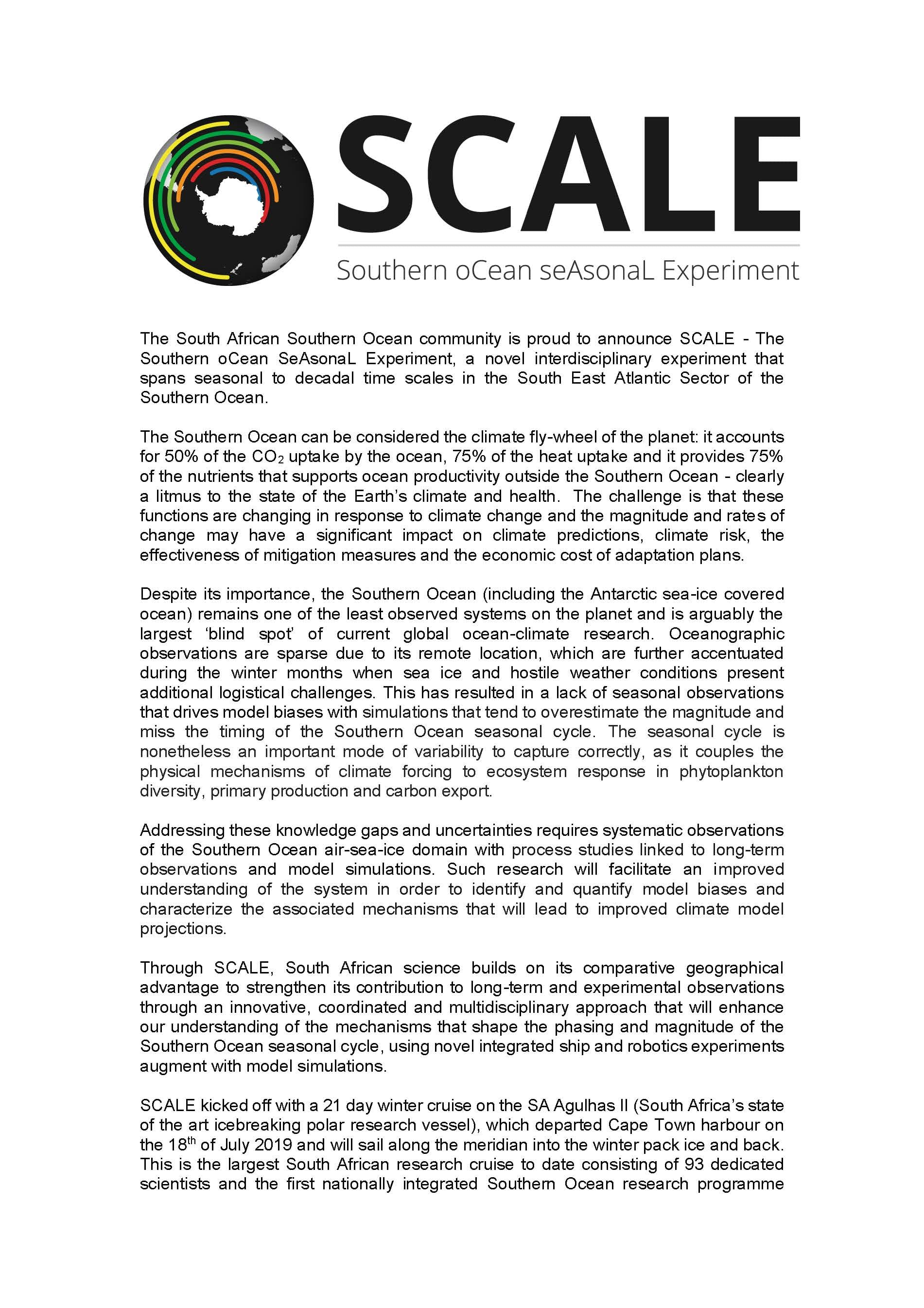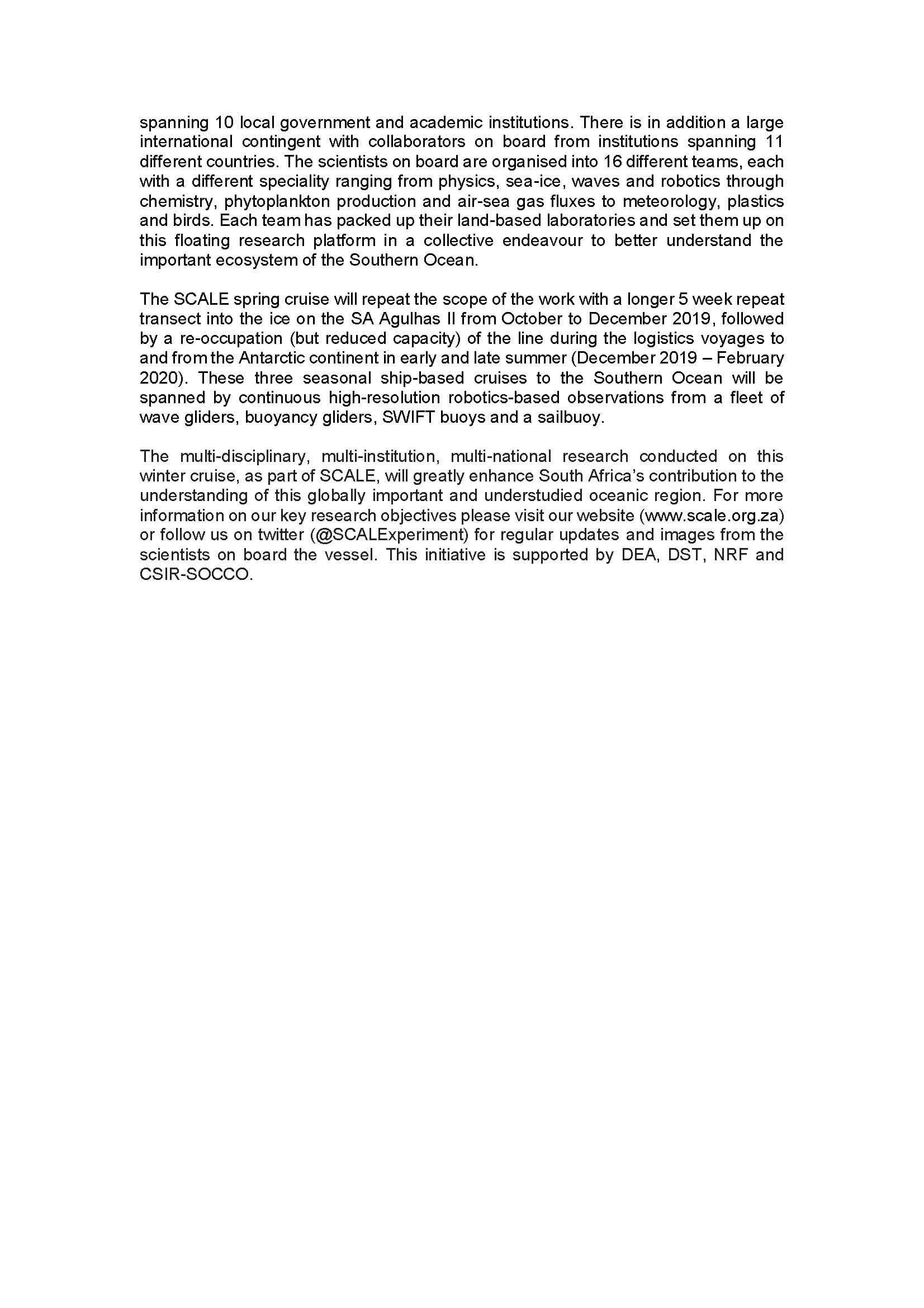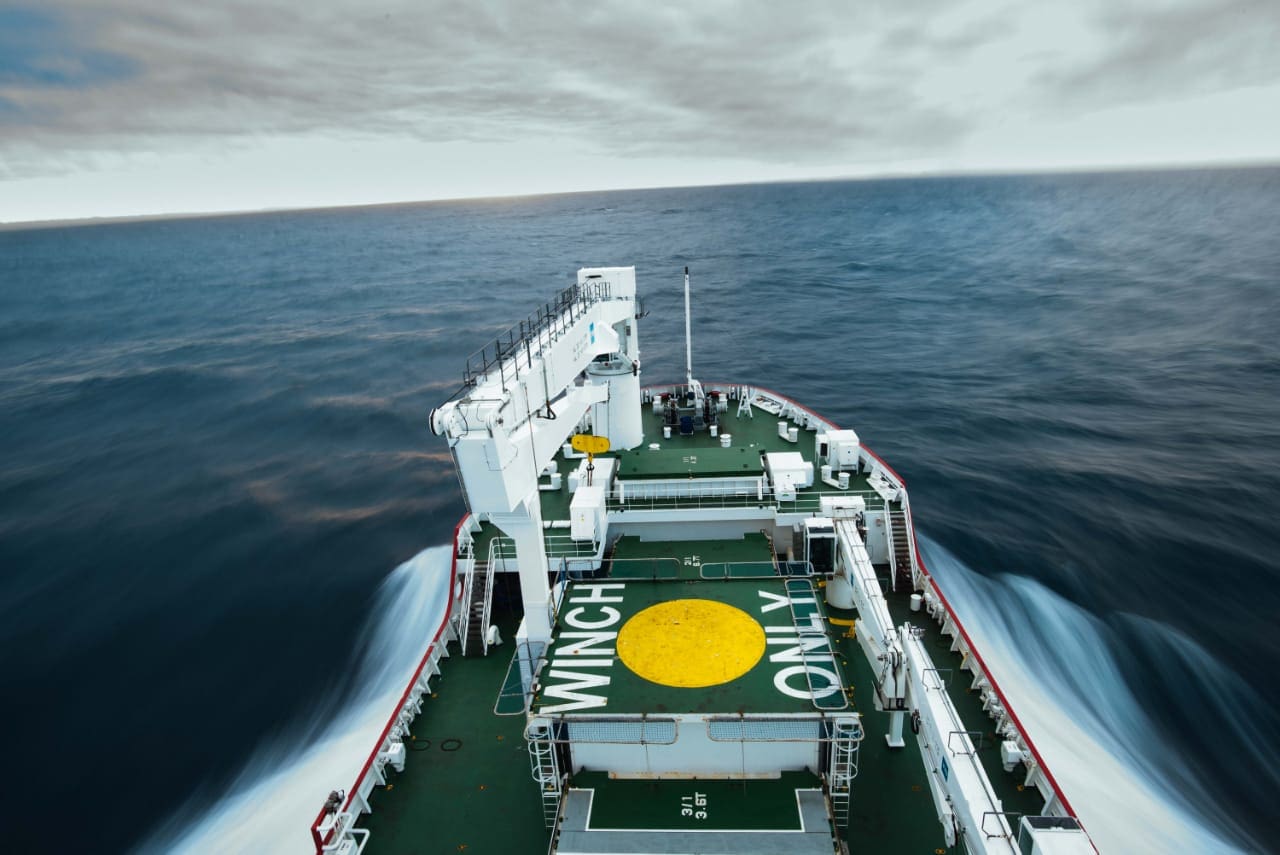
by Fishgate@sanap | Aug 13, 2019 | Antarctica, Important Dates, Marion Island, News, Overwintering Team, Research, SANAE, Science, Take-Over Operations
August is a very special month for women in South Africa and this said we would like to salute women within the South African National Antarctic Programme.
SANAP is filled with strong women in Antarctic, sub-Antarctic and Southern Ocean research. The programme also consist of a number of brave women overwintering at the South African research stations (Marion Island, Gough Island and Antarctica).
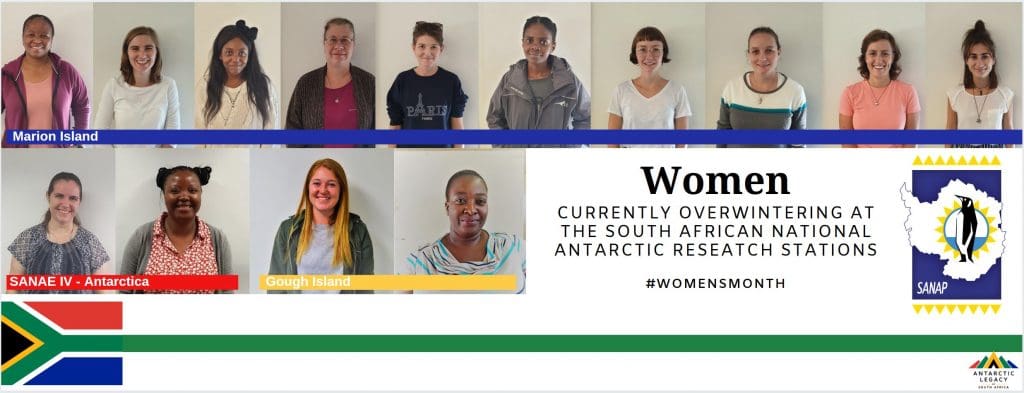
There are 29 National Research Foundation/Department of Science and Technology funded projects within SANAP and 13 of these are managed by women. This is evident that women definitely have a place within Antarctic research.
The South African National Space Agency (SANSA) sends four volunteers to Antarctica every year. These volunteers assist with hard work (physically and mentally). The last take-over to Antarctica, three of the four South African National Space Agency (SANSA) volunteers were women.
During my trip to Antarctica earlier this year, I had the opportunity to meet a number of very inspiring women – in the video below, meet the three SANSA volunteers of the 2018/2019 Antarctic take-over and the new VLF (Very Low Frequency) SANSA Engineer, who is currently overwintering at the South African National Antarctic Expedition station (SANAE IV).
Anché Louw, Antarctic Legacy of South Africa, 13 August 2019.

by Fishgate@sanap | Aug 5, 2019 | Antarctica, News, Research, SA Agulhas II, SANAP, Science, Southern Ocean, sub-Antarctic
It is the last week of the SCALExperiment Winter Cruise of 2019. Here’s what the engineers of Stellenbosch University are currently doing onboard the S.A. Agulhas II.

Observations of stern and bow slamming done from the SAAII bridge
During the SCALE Voyyage to Antarctica, the Sound and Vibration Group has been conducting full scale measurements using accelerometers placed on the S.A. Agulhas II. Wave observations have been conducted to estimate the height and frequency of the waves encountered by the vessel. With this, slamming observations have been conducted. When the vessel is experiencing slamming the team is tasked to rate the slam according to the comfort experienced.
The team has conducted ship manoeuvers in open water while stationary and moving at various speeds. This was done to investigate under which wave states the vessel experiences slamming.
The team is also investigating human comfort onboard the vessel. Passengers fill in daily motion sickness and slamming surveys. In addition to this a head acoustic dummy, Mike, has been measuring the sound experienced in a passenger cabin.
Information received from: Prof Annie Bekker, Associate Professor, Department of Mechanical and Mechatronic Engineering, Stellenbosch University, 05 August 2019
Photos: supplied by Sound and Vibration Group

by Fishgate@sanap | Aug 2, 2019 | Announcement, News, Science
Dear all
The West Indian Ocean Governance and Exchange Network (WIOGEN) is one of the MeerWissen initiatives and was launched earlier this month. WIOGEN is an opportunity to produce joint publications through the science exchanges, be involved in a science to policy event, training schools and virtual learning. The network activities will be driven by the needs of the region and its members.
The first conference will take place on the 7th and 8th of November 2019. Please fill in the survey to ensure that you are included in news about WIOGEN and to express your interest in attending the November event (it is a non-obligatory expression of interest). https://www.surveymonkey.com/r/BLQ95Q3
Please click here for more information. We look forward to welcoming you to the network and working with our partners to improve ocean governance in the West Indian Ocean. If you have any questions please feel free to email info@wiogen.org or visit the (under construction) website: https://wiogen.org/
Best wishes
Shannon
(Representing implementing partners IOI-SA and Leibniz Centre for Tropical Research – ZMT)
—
Dr Shannon Hampton
International Ocean Institute – African Region
CBC Building, Kirstenbosch, Rhodes Drive, Newlands
0217998830
www.ioisa.org
https://www.facebook.com/IOISouthernAfrica/
http://howtosurvivephd.blogspot.com/

by Fishgate@sanap | Aug 1, 2019 | Antarctica, Current Event, News, Research, SA Agulhas II, SANAP, Science, Southern Ocean
Jean Loock and Johan Viljoen, Stellenbosch University doctoral candidates currently onboard the S.A. Agulhas II, gave some insight on why the TracEx -group is so interested in studying the Southern Ocean during winter and the particular interest in the seasonal sea-ice.
“Phytoplankton are microorganisms that help regulate global climate through carbon dioxide uptake as they photosynthesise. To do this they require nutrients but in the remote oceans food is scarce, resulting in fierce competition and poor growth of these plankton. However, within the seasonal sea-ice that grows during winter and extends northwards from Antarctica, a thriving little community of microorganisms exist.
Our team is looking to analyze the snow layer on the ice, the ice itself and the water below the ice in an attempt to understand how these nutrients are concentrating within the ice. It may be that during the summer melting phase, these nutrients are expelled from the ice and provide the food required for large scale blooms of phytoplankton and thereby improved carbon dioxide uptake. These curious cases are crucial to improving our understanding of the climate system in a changing environment”.
Follow the TracEx Group on Facebook and Twitter.
Preparing the Mini Geotraces CTD Rosette before the cruise:
On the day of the first launch, during the #SCALExperiment #WinterCruise2019 .

Team TracEx getting ready to deploy their new mini CTD rosette in ice conditions to collect water samples to study the trace metals in the water column below ice. Photo Credit: Johan Viljoen
For more information on #SCALExperiment #WinterCruise2019 – click here.
Anché Louw, Antarctic Legacy of South Africa, 01 August 2019

by Fishgate@sanap | Jul 24, 2019 | Current Event, Research, Science, Southern Ocean
Cruise Date: 18 July 2019 until 12 August 2019.
Do you want to know more about this year’s SCALE (Southern oCean seAsonal Experiment) Winter Cruise, which is multi-disciplinary, multi-institution, multi-national research conducted in the Southern Ocean?
Click on the media brief below for more information:


For more information on this year’s scientific programme and to meet the national and international partners part the cruise – click here.
Check out the following hashtags on social media:
#SCALExperiment and #WinterCruise2019
https://www.facebook.com/AntarcticLegacySA/posts/911389042533372

by Fishgate@sanap | Jul 9, 2019 | Current Event, News, Research, SA Agulhas II, SANAP, Science, Southern Ocean
On the 1st of July 2019, 41 students from various universities across South Africa have set sail from the Port of Cape Town, onboard the S.A. Aghulus II, as part of the annual SEAmester course run by Prof Isabelle Ansorge from the Department of Oceanography, University of Cape Town. Assisting her onboard is Tahlia Henry, programme coordinator; watch this interview with Tahlia just before departure. Students who are in the marine field of study and who make it through the hundreds of applications get the fantastic opportunity to participate in this 11-day South African class afloat. The cruise travels up the coast to Port Elizabeth where the vessel turns into the deeper oceans in order to travel along the ASCA line. The line plots its course at certain intervals, where CTD (conductivity, temperature and depth) tests are done.
While students are onboard the days are filled with a selection of lectures and practicals, run by leaders in the field of marine science. The practicals give students some hands-on experience within their field of interest, for example students get to partake in CTD observations where the CTD is lowered to different depths at different points along the cruise to measure depth, salinity and temperature. These observations are done in order to gain a better understanding of the Aghulus current. The South African Weather Service also has a meteorological technician/forecaster onboard, demonstrating the release of a weather balloon, while informing students on the data gathered from the radiosonde (box attached to the balloon gather certain data) – view this video to learn more about weather observations from the S.A. Agulhas II. Other practicals onboard include; dissections on marine mammals, parasitology studies, seafloor sediments studies, mammal observations and micro plastic sampling.
Surrounded by the blue ocean looking left, right, backwards and forwards reminds one of the vastness of the ocean. Sunrises and sunsets are most definitely a highlight for students as they are able to watch the sun break through the horizon from the monkey deck.
The cruise has thus far experienced some great weather in the first few days, but we did end up face to face with a cold front. It was a slightly bumpy ride to say the least as the vessel had to navigate its way through 9m swells and 40 knot winds.
The vessel is expected to back in the Port of Cape Town by morning, 11 July 2019.

S.A. Ahulhas II moving through calm waters. Photo Credit: Alex Oelofse.
All photo supplied by the photographer onboard the vessel: Alex Oelofse.
Author: Alex Oelofse, Photographer onboard the vessel. Edited by: Anché Louw, 09 July 2019.



